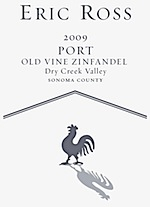 When pouring the dessert wines here in Locals I get a few common questions about what makes a port. For example the Eric Ross Old Vine Zinfandel Port– why is it red? Why can Eric Ross call it a port? What is the difference between a port and a late harvest?
When pouring the dessert wines here in Locals I get a few common questions about what makes a port. For example the Eric Ross Old Vine Zinfandel Port– why is it red? Why can Eric Ross call it a port? What is the difference between a port and a late harvest?
First off, the difference between a port (also referred to as a fortified wine) and a late harvest is the inclusion of a hard alcohol to “fortify” the wine. This is part of the reason ports can last weeks, not days in an opened bottle. Both have very high sugar contents, and are very sweet in nature. Like Pendleton’s late harvest Petite Sirah, in order to achieve the fuller flavor and to cut down on the sweetness to make a “unsweet dessert wine” Mike Pendleton used a strong yeast to lower the sugar content from the late harvest Durif. Make no mistake, both a port and a late harvest needs yeast, though not always the same strain in order to become a dessert wine.
Then there is the difference between ruby and tawny ports. A Ruby port is a young port that was bottle aged, and usually uses a high proof fortifying agent. They are usually under 10 years old. The tawny ports get their name from their color. More of a ruddy brown, these ports are aged in barrels for decades, absorbing the color from the oak barrels used to preserve it. In Portugal the tawny port is sometimes given as a christening gift. In 20 years once the child has matured, they can drink this port that is as old as they are!
Afterthought:
This made me wonder. If you fortify the port before fermentation, what happens when you fortify after the yeast has done its job turning juice into wine? Stay tuned for the next blog port about the evil twin of port: Sherry!
Locals Tasting Room
(707) 857-4900

